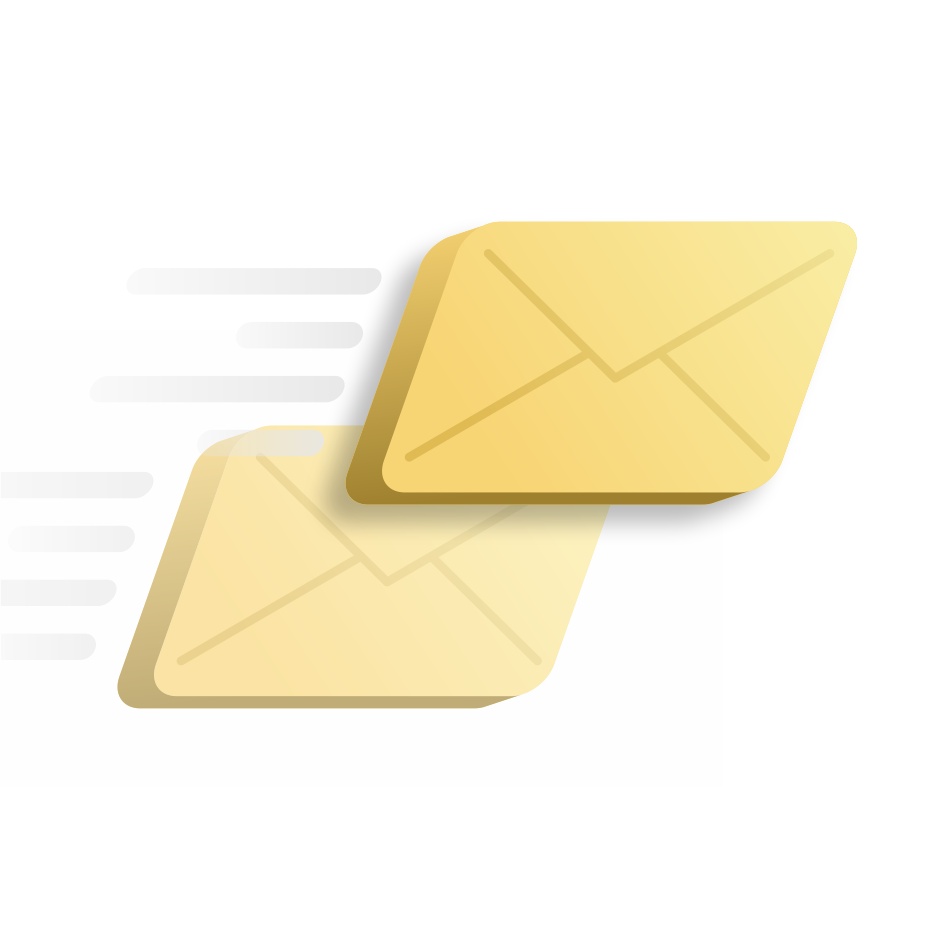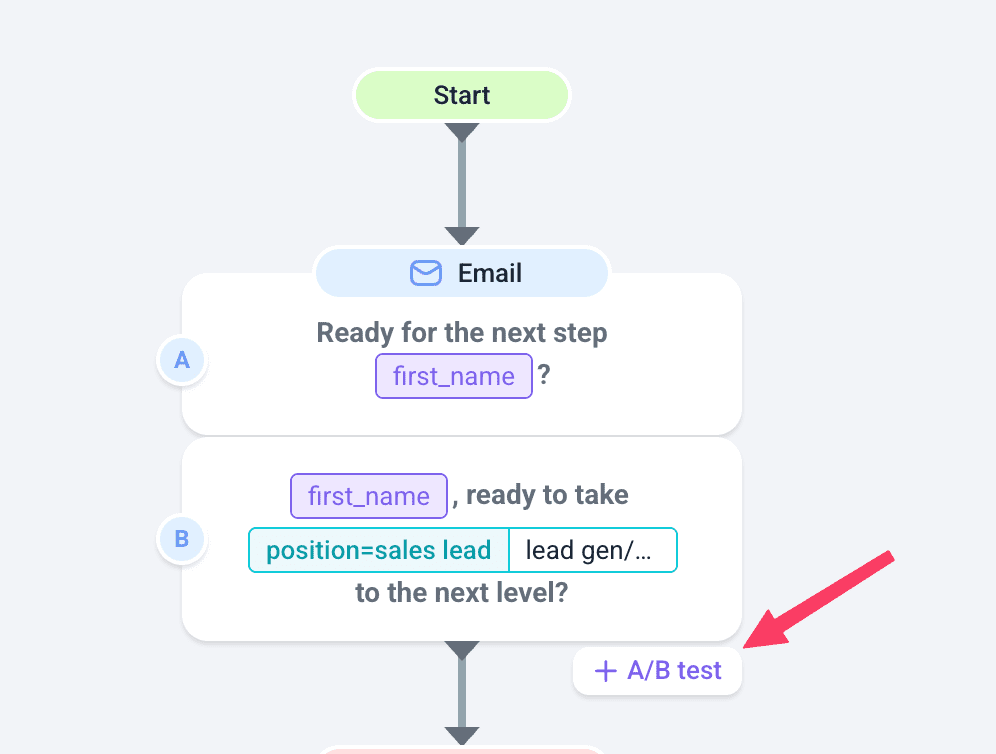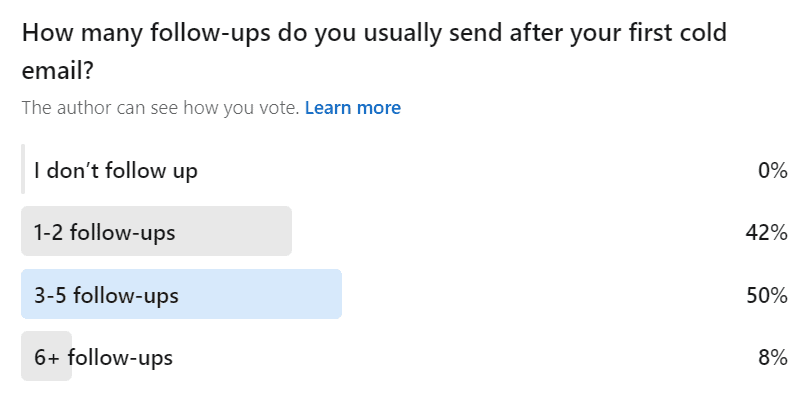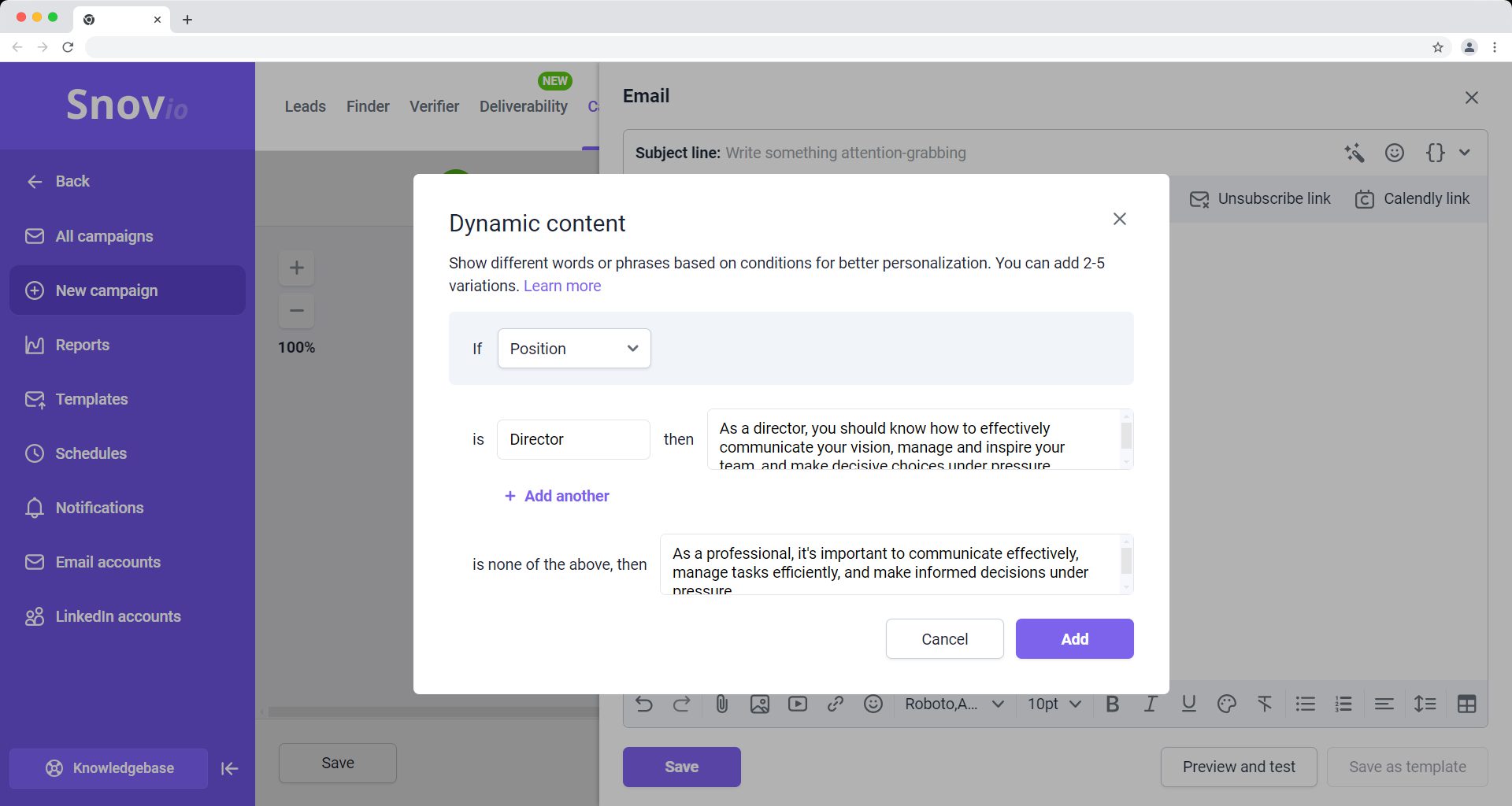TL;DR:
Cold emailing for outreach isn’t dead in 2025, but it’s evolved.
This guide shows you how to write cold emails that convert by:
- Crafting compelling subject lines (short, personalized, curiosity-driven, with social proof & numbers).
- Personalizing at scale by referencing achievements, shared connections, or industry pain points.
- Writing concise, value-driven bodies with clear benefits and social proof.
- Using strong, polite CTAs that drive action without sounding pushy.
- Following up strategically (3–5 follow-ups, each adding value).
- Optimizing deliverability & performance through email warm-up, verification, and A/B testing.
Snov.io helps make it happen: from AI-powered email personalization, A/B testing, and sentiment analysis for smarter follow-ups, you will build data-driven campaigns, nurture your leads, and boost conversions.
“I hope this email finds you well.”
Will you still be using this classic line in 2025 or 2026? I hate to break to you, but it doesn’t work anymore. Neither do other practices we’ve seen before.
So, let me walk you through the cold email tips and strategies that have proven to be most effective these days. I’m sure they will transform your vision of how to write a cold sales email and win more opportunities.
Here’s what you’ll find in this guide:
- What is a cold email, and why is it a problem in 2025?
- How to write cold emails that get replies?
- Step 1: How to craft a compelling subject line
- Step 2: How to personalize your cold email to build rapport
- Step 3: How to write a catchy cold email body
- Step 4: How to write a strong call to action (CTA)
- Step 5. How to make a professional signature
- Step 6: How to test and optimize your cold emails
- Step 7: How to follow up strategically
- Best cold email templates for various goals
- Cold email outreach strategies that work in 2025
What is a cold email, and why is it a challenge in 2025?
Cold emails are messages sent to prospects with whom you’ve had no prior interaction. Their goal isn’t just to sell, but to build a relationship with your prospects, share solutions to their pain points, or spark interest in your product or services.
The challenge of cold emailing is that it is becoming increasingly harder to cut through the numerous emails your prospects receive daily and incentivize them to open yours. Many people also can’t draw the line between a cold email and spam, thinking it’s better to use the “spray and pray” technique instead of a more nuanced approach.
Firstly, let me clarify: cold emails are NOT spam. They are personalized, targeted, and offer real value.
According to recent research, about 54.4% of users admit that sending cold emails has become harder. And if I tell you that the average reply rate to cold campaigns is only 4.1%, the situation looks really desperate.
However, 61% of decision-makers still rely on cold emailing for outreach, preferring it to LinkedIn messaging and cold calling.
So what’s wrong with cold emails, then?
Today, B2B lead generation specialists often overlook quality, sending AI-generated messages that lack personalization and value. As a result, B2B prospects are bombarded with tons of lookalike copies, leading to serious fatigue that is killing reply rates.
How to write cold emails that get replies?
When done right, cold email can still be a powerful tool, opening doors to new sales opportunities. And though writing cold emails that get replies in the era of AI-powered automation is challenging, you can do it effectively if you follow the key principles:
- Personalization and relevance
- Simplicity and clarity
- Providing real value
- Smart follow-up strategy
- Focus on deliverability
Step 1: How to craft a compelling subject line
The subject line makes the first impression in your email. If it doesn’t catch attention, your message will most likely get buried under dozens of others.
Here are a few proven tips for writing the best cold email subject lines:
Tip #1. Create the feeling of curiosity
Encourage the recipient to open the email. The following subject line is a good example of how you can entice interest while hinting at the value you’re offering:
Tip # 2. Personalize
It’s not just about mentioning the recipient’s name. Signal you’ve done some homework beforehand and know specific information about the prospect, for instance, their product, like in the following cold email subject line example:
![]()
Tip # 3. Use social proof
If you’ve worked with any recognizable companies in the recipient’s industry, highlight them in your subject line. This builds instant credibility, for example:
Tip # 4. Leverage numbers
Subject lines that contain numbers tend to bring email senders higher open rates. They sound more persuasive, arousing interest in reading what’s inside.
Tip #5. Keep it short
The best cold email subject lines are those that are no longer than 40-60 characters. Anything that exceeds this length could get cut off, especially on mobile devices.
Step 2: How to personalize your cold email to build rapport
Effective cold email is about showing that you understand who your leads are and what matters to their business. This level of relevance builds trust and makes your message stand out in a prospect’s inbox.
Tip # 1. Reference the prospect’s recent achievements or content
Did they just launch a new product, win an award, or publish a blog post? Mentioning a recent event or update that’s publicly available shows you’ve done your research and prepared an exclusive offer.
|
Example: Hi [Name], I saw your recent blog post on how your company is tackling [specific challenge]. It’s inspiring, and I believe our [product/service] could help you achieve even more success in this area. |
Tip #2. Tailor the message to their industry or needs
Personalization means understanding the recipient’s business and challenges. For instance, if you’re sending cold emails to marketing managers, mention specific pain points they might be dealing with, like optimizing conversion rates or managing social media campaigns.
|
Example: Hi [Name], I noticed that your company is entering new markets. I’d love to discuss how our [product/service] can help you drive conversions and retain new customers more effectively. |
Tip # 3. Mention shared connections or common interests
Let prospects know if there’s anything you have in common. This helps establish credibility and a sense of trust from the outset.
|
Example: Hi [Name], I was referred to you by [mutual connection]. I wanted to reach out and see if you’d be open to a conversation about [specific business challenge]. |
Step 3: How to write a catchy cold email body
Structure your email in a way that immediately conveys relevance. It should feel natural, easy to skim, and geared toward solving a specific problem. Here are several proven tips that help our users write high-performing cold email bodies:
Tip #1. Start with a hook
Forget that annoying “I hope this email finds you well” phrase. The opening sentence should grab attention immediately and explain why you’re reaching out.
|
Example: I’ve reviewed your company profile on LinkedIn and noticed that you’re looking to improve your conversion rate. What if you could boost sales without increasing workload? |
Tip #2. Provide social proof
Briefly mention how other known companies have achieved notable results with your solution. This proves your expertise and boosts credibility. But refrain from the clichéd “We help companies like yours…”
Instead, include a real case study with numbers. This way, you’ll add value to your message:
|
Example: We recently helped [Well-Known Company] shorten their sales cycle by 22% in 3 months |
Tip # 3. Highlight how the benefit can be achieved
Now it’s your moment to shine. You can reveal your product benefits without being pitchy.
|
Example: We recently helped [Well-Known Company] shorten their sales cycle by 22% in 3 months |
Tip # 3. Highlight how the benefit can be achieved
Now it’s your moment to shine. You can reveal your product benefits without being pitchy.
|
Example: We recently helped [Well-Known Company] shorten their sales cycle by 22% in 3 months by automating their outreach campaigns with smart, built-in personalization. |
Step 4: How to write a strong call to action (CTA)
The CTA is the climax point, where you ask the recipient to take the next step, spreading all your professional vibe. I recommend the following cold email tips for an effective CTA:
Tip #1. Be specific
Avoid vague phrases like “Let me know what you think” – they’ll most likely be ignored. Precise action expressions such as “Can we schedule a 10-minute call this week?” or “Are you open to a demo this week?, will work much better.
Tip # 2. Don’t be pushy
Keep your tone polite. The CTA that starts with a straightforward imperative such as “Book a call now” will most likely be perceived as aggressive. Starting with modal verbs like ‘Would’, ‘Could’ will make a difference: e.g., “Would you be open for a call?”
Tip #3. State the time, but allow flexibility
Forget about open-ended CTAs like “When will be a good time to join for a call?” Experience shows they don’t bring results. Instead, suggest a clear time frame but leave a possibility to choose among options:
|
Example: Happy to share how we can help [Prospect’s Company] close deals faster as well. Would a quick 15-minute call this Tuesday or Friday afternoon work for you? We can adjust the time if needed. |
If you’re requesting a meeting, you can include a link to your calendar for prospects to schedule the time that works best for them.
Step 5. How to make a professional signature
It may sound obvious, but few sales representatives elaborate on this element, often limiting their farewell to a standard ‘Best regards, Tom.’ My recommendation is that you add more details to make your signature look professional, such as your position, company name, and contact information.
|
Example of a good cold email signature: Best regards, Lucy Smith Content expert at Snov.io lsmith@snov.io |
Before we move to the next steps, let’s take a look at the cold email example that perfectly unites all elements and tips stated above:
And here is a template of this message you can copy and use:
|
Subject line: The Secret Behind [Well-Known Company]’s 18% Sales Surge Hi [Prospect Name], I’ve walked through [Prospect’s Company]’s profile on LinkedIn and see you’re looking to grow your sales conversion rate. What if you could boost sales without even increasing workload? We recently helped [Well-Known Company] grow their revenue by 18% in 6 months by automating their outreach campaigns with smart, built-in personalization. Happy to share how we can help [Prospect’s Company] close deals faster as well. Would a quick 15-minute call this Tuesday or Friday afternoon work for you? We can adjust if needed. Best regards, [Name] [Position] at [Company Name] [Email] |
Step 6: How to test and optimize your cold emails
Once you’ve nailed down the basics, it’s time to analyze how it performs and optimize your cold email outreach strategy accordingly. That’s where A/B testing comes in handy. It lets you experiment with subject lines, body copy, and CTAs to find the best option and make data-driven improvements.
|
📍 Software that can help test cold email performance With Snov.io’s built-in A/B testing feature, you can experiment with 15 message variations to find the best subject lines, personalization patterns, and CTAs—all inside your cold email campaign builder. |
Step 7: How to follow up strategically
Cold outreach isn’t just about the first email – you need to keep the wheel rolling with timely follow-ups. If you lack persistence, you have minimal chances of closing a sales deal.
More so, even a single follow-up message isn’t enough to get a desired response. Recently, we’ve conducted a quick survey among Snov.io users asking them how many follow-ups they commonly send after their first cold email. The majority of respondents state they send 3-5 follow-up emails as a rule:
I recommend sending one initial email and one follow-up after that. In my experience, this keeps you on a prospect’s radar without coming across as pushy.
Outbount Outreach Expert at Snov.io
So, how to create a winning email follow-up strategy?
Tip #1. Give it time
Following up is about striking a balance: you should be neither too pushy nor too passive. At Snov.io, we recommend waiting 3–5 days after your initial email before your first follow-up flies to a prospect’s inbox.
Tip #2. Keep it short and friendly
Each of your follow-up messages should feel like a gentle reminder. Keep it concise and respectful; otherwise, busy people will most likely skim it.
Tip #3. Restate the benefit
Reiterate why your email is worth the prospect’s time. Avoid using trite phrases like “Just following up,” as in the follow-up email example below:
Remember, follow-ups are another chance to win the prospect’s attention — motivate them to do that.
Consider how you could improve the example I’ve just shared, and feel free to leave your ideas in the comments to this post.
Tip #4. Add value in each follow-up
Every follow-up within your sequence should offer something prospects may need. For instance, you can provide a professional tip in the first follow-up, share a case study in the second, offer an incentive in the third, and so on.
|
💡 Software that can help build a follow-up campaign With sentiment analysis from Snov.io, you can identify warm prospects, prioritize your outreach, and craft follow-ups that truly resonate with them. The software evaluates email opens, clicks, and replies, automatically scoring each lead’s interest level. |
Best cold email templates for various goals
Now that you’ve got cold email guidelines to follow, let me equip you with several handy cold email templates tailored for specific outreach scenarios. Feel free to customize them according to your audience, industry, and goals.
Cold email template #1. Focus on social proof
Use this template to show how your company can help clients reach their goals.
|
Subject: Boosting [Metric] at [Well-known company] — Now Your Turn! Hi [First Name], I saw that [Company Name] is focused on [specific goal or project] and thought you’d be interested in how [Your Company] helped [Well-known or similar company] achieve a [mention specific result in numbers] in just [timeframe]. I believe that by [specific benefit] with our [Your product/service], you can achieve a similar or even better result. Are you open to a quick 15-minute call on [Day/time] to discuss how we can help you [describe specific outcome]? Best regards, [Your Name] [Title] at [Company] |
What’s good about this template: It references a well-known brand, which strengthens the feeling of trust and encourages a prospect to exceed the result. Most likely, they’ll be ambitious enough to open the message and respond.
Cold email template #2. Focus on a competitor
Use this template to draw a clear comparison between you and a competitor and win the prospect’s attention.
|
Subject: Outpace [Competitor’s Name] This Quarter Hi [First Name], I noticed that [Company Name] is focused on [specific goal or project]. Recently, we’ve helped [Competitor’s Name] achieve a [specific result in numbers] within just [timeframe]. With our [Your Product/Service], they’ve [describe a key benefit], and I believe you can do even better. Let me show you how. Are you available for a brief 15-minute demo call on [Day/time] to discuss your growth opportunities in more detail? We can adjust the time if needed. Best regards, [Your Name] [Title] at [Company] [Email] / [Website link]/[LinkedIn account link] |
What’s good about this template: It focuses on a prospect’s competitor, creating the FOMO effect and motivating them to overperform the results. Plus, this cold email comes across as really friendly and supportive.
Cold email template #3. Highlighting achievements
Leverage this approach to present your achievements and build credibility with prospects.
|
Subject: Congrats on [Achievement] — What’s Next? Hi [First Name], Congrats to you and the team on [Achievement]! It’s inspiring to see how the [Prospect’s industry] develops due to companies like [Prospect’s company]. At [Your Company], we support brands that make an impact by [describe a key benefit]. I believe that with our [Your Product/Service], [Prospect’s company] can [describe results, adding numbers if possible]. Would you be open to a quick chat this week to explore how we could support your growth goals? You can book a meeting directly via my calendar link: [calendar link]. Best regards, [Your Name] [Title] at [Company] [Email] / [Website link]/[LinkedIn account link] |
What’s good about this template: It demonstrates you’ve done research to learn more about a prospect, which makes them feel special. By celebrating their accomplishments, you contribute to mutual joy and offer help – the perfect combination enticing a recipient to react.
Cold email template #4. A follow-up email after no response
Use this template to stay on your prospect’s radar and keep the door open for future engagement.
|
Subject: A quick idea on your next big win Hi [First Name], I am following up on my previous email about how our [product/service] can help you achieve [specific result]. I’d be happy to schedule a call to explore how we can help you improve [specific outcome]. Interested? Feel free to book a slot directly on my calendar here: [calendar link]. Looking forward to hearing from you! Best regards, [Your Name] [Title] at [Company] [Email] / [Website link]/[LinkedIn account link] |
What’s good about this template: The subject line restates the value of the offer. The copy itself is short, clear, yet informative, giving a prospect a good reference to the initial message.
|
💡 Software that can help craft high-converting cold email templates A well-known ChatGPT, when provided with smart prompts, may be a good friend for cold email copywriting. However, personalization will always be a pain in the neck. Want to craft highly personalized cold emails and follow-ups directly within your campaigns? Snov.io has something to offer. Its toolset includes powerful features to personalize your outreach at scale:
|
Cold email outreach strategies that work in 2025: best practices and tech support from Snov.io
Beyond the basics, I’ll also provide the key practices that should be a part of your cold emailing outreach strategy:
Prioritize deliverability before scaling
Even the best cold email won’t work if it never reaches the inbox. Get used to checking your email deliverability rate and improving it when needed. With Snov.io, you can regularly monitor your sender score, do spam checks, and manage your sending volume all under one roof.
What’s more, you can always warm up your email account (both new and active) to improve deliverability.
Verify emails to protect your sender’s reputation
Before sending a cold email, ensure your contact list includes valid addresses. This must be your regular practice, too. Invalid addresses will bring you bounces and harm the sender’s reputation and inbox placement.
With Snov.io’s Email Verifier, you can do quality email list hygiene in minutes, removing invalid or risky addresses and keeping your database healthy from the start.
Follow safe automation practices
You can do without automation in 2025. But it doesn’t mean you can rely on it blindly. No matter which automation tool you use for cold email outreach, ensure it abides by sending limits and offers functionality to control the process.
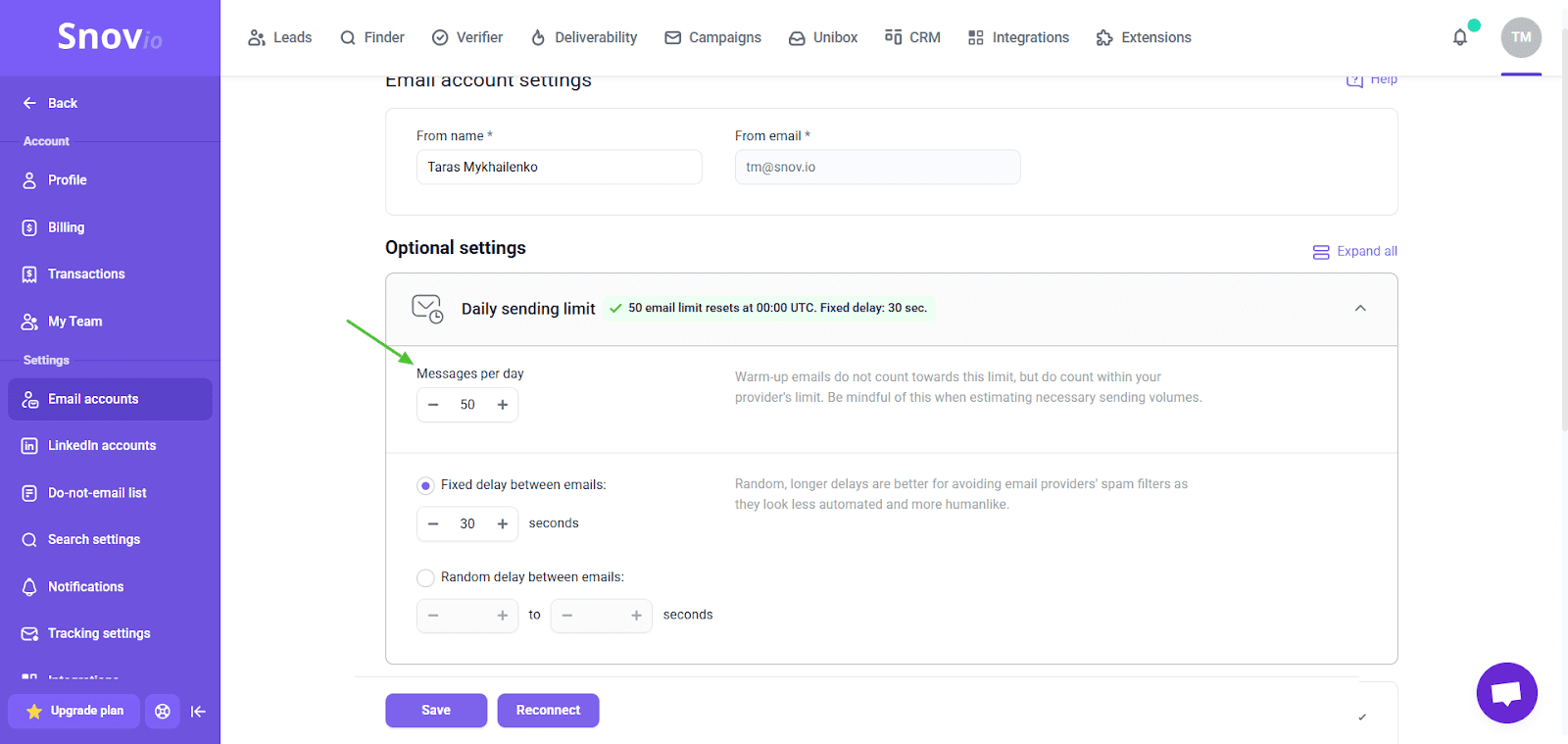
Regularly track and analyze your cold email outreach
Sending cold emails is only half the strategy. The real power comes from tracking how they perform. By learning how to optimize cold email performance, you can set up the following campaigns so they bring more conversions and sales opportunities.
In Snov.io, you can always access detailed analytics on every email you send, including open rates, click-throughs, replies, and interest levels. These insights help you understand which subject lines convert, which sequences perform best, and where prospects drop off.
Wrapping up
My key goal here was to show that using cold emailing for outreach remains a highly efficient tactic in 2025. What you need is to put some effort into smart personalization, timing, and strategy.
Optimize every element of your message, refine your approach with regular testing, and use powerful cold email automation tools like Snov.io to support your performance.

